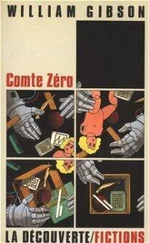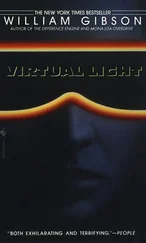And, in the process of adding to eBay’s gargantuan hit-pile, several days before, I had gotten myself in trouble. In Uruguay.
How this happened: I’m home in Vancouver, midway through that first cup of morning coffee, in front of the computer, ready to work straight from the dreamstate.
I am deep into eBay, half awake, staring at a scan of this huge-ass Zenith diver’s watch. And I am, mind you, a practicing ectomorph. I have wrists like pipe stems. I am not going to get too much wear out of a watch that’s actually wider than my wrist.
But a little knowledge is a dangerous thing, and I know, having already become a habitué of eBay’s Clocks, Timepieces: Wristwatches, that the movement in this particular Zenith is the very one Rolex installs in the big-ticket Daytona. Making this both a precision timepiece and possibly an undervalued one — the identical thing having sold on eBay, the week before, albeit in better cosmetic condition, for around two grand.
“I didn’t even know you had Web access,” Patrick said. “You mean you’ve overcome your infamous resistance to using the Net, but only in order to service an eBay addiction?”
Well, yes. Sort of. Not exactly.
eBay is simply the only thing I’ve found on the Web that keeps me coming back. It is, for me anyway, the first “real” virtual place.
In Patrick’s hotel room, we used his laptop to get onto eBay, where I discovered that, yes, I was still high bidder for the damned Zenith: $500 American. This bid, you see, was the result of Fiddling Around. I’d sat there in my office, not quite awake yet, and had poked around with modest but increasingly higher bids, assuming that the seller’s hidden “reserve,” the lowest bid he’d accept, would be quite high. But no, at $500 I hit it, and suddenly I was listed there as high bidder. This had happened before, and I had always been outbid later. So I didn’t worry.
But I didn’t really want to have to buy this very large watch. Which was in Uruguay. And now I was still high bidder, and the auction would be run off before I got back to Vancouver. I thought about having to resell the Zenith.
When I did get back, though, I discovered, to mixed emotions, that I’d been “sniped.” Someone, or rather their automated bidding software, had swooped in, in the last few seconds, and scooped the Zenith for only the least allowable increment over my bid.
How did I get into this, anyway?
I went happily along for years, smugly avoiding anything that involved a modem. E-mail address? Sorry. Don’t have one.
And then I got a website. Had one foisted upon me, actually, and quite brilliantly, by Christopher Halcrow, who created “William Gibson’s Yardshow,” an “official” home page. So I kept having to go into my kids’ bedrooms and beg for Web access to look at it, which bugged them.
Then Chris, who knows a bargain when he sees one, happened to buy this Performa 520 °CD from someone who was leaving town. He passed the Performa on to me for what he’d paid for it, and suddenly I had this video-ready machine I could look at my site on, and the video-ready part brought cable into the office, so I got a cable modem, because it was faster, and I already had a hole drilled in the wall, and then I discovered that, damn, I had an e-mail address. It was part of the deal. So e-mail, over the course of about fifteen minutes, replaced the faxes I’d been using to keep in touch with certain people.
In the way of things, very shortly, I no longer had a website, Chris having found it necessary to get a life. But there was the rest of the Web, waiting to be explored. And I did, and promptly got bored. It was fun, at first, but then gradually I found that there wasn’t really anywhere in particular I wanted to go. I went a lot of places, but I seldom went back.
Then I found eBay. And I wanted to go back. Because eBay is, basically, just a whole bunch of stuff. Stuff you can look at and wonder if you want — or let yourself want and then bid on.
Mechanical watches are so brilliantly unnecessary.
Any Swatch or Casio keeps better time, and high-end contemporary Swiss watches are priced like small cars. But mechanical watches partake of what my friend John Clute calls the Tamagotchi Gesture. They’re pointless in a peculiarly needful way; they’re comforting precisely because they require tending.
And vintage mechanical watches are among the very finest fossils of the predigital age. Each one is a miniature world unto itself, a tiny functioning mechanism, a congeries of minute and mysterious moving parts. Moving parts! And consequently these watches are, in a sense, alive. They have heartbeats. They seem to respond, Tamagotchi-like, to “love,” in the form, usually, of the expensive ministrations of specialist technicians. Like ancient steam tractors or Vincent motorcycles, they can be painstakingly restored from virtually any stage of ruin.
And, as with the rest of the contents of the world’s attic, most of the really good ones are already in someone’s collection.
But the best of what’s still available, below the spookily expensive level of a Sotheby’s watch auction, can still be had for a few thousand dollars at most. At the time of this writing, the most desirable vintage Rolex on one New York dealer’s website, a stainless-steel “bubble back” automatic, is priced at $3,800, a fraction of the cost of many contemporary watches by the same maker. (And it’s so much cooler, possesses so much more virtu , than one of those gold-and-diamond Pimpomatic numbers!)
My father bought a stainless-steel Rolex Oyster with a stainless band at a duty-free in Bermuda in the early Fifties.
After his death, not very long after, my mother put it away in a bank vault, from whence I wheedled it when I was eighteen or so. I had a Rolex dealer in Tucson replace its white dial with a black one, so that it would be more like the one James Bond wore in Fleming’s novels. I loved it, and, one very sad night a few years later, I sold it for very little to a classmate of mine, in order to pay for a hotel room in which to enjoy, if that’s the word, a final bitter tryst with my high school sweetheart. It was one of those dumb-ass, basically self-destructive gestures, and I actually don’t regret it. I needed that hotel room. But I’ve always missed that watch, that Rolex Oyster Precision, and have always had it in the back of my mind to replace it one day with another of similar vintage. I had never done anything about it, though, and made do quite happily with quartz. My last quartz watch was a French faux-military job I bought at the airport in Cannes, on my way home from the film festival. Cost about a hundred dollars. Perfectly adequate for everything — everything except the Tamagotchi Gesture.
Last year, for some reason, I was struck by an ad, one that ran repeatedly in the British men’s fashion magazines, for the Oris “Big Crown Commander.” It was just a very good-looking watch, I thought, and it was Swiss, and mechanical, and not terribly expensive as such things go. Driven in part by my then brand-new Web access, I used a search engine to determine that Oris had no Canadian distributor. This made the watch seem even cooler, so I went on, via the Web, to locate a Seattle retailer who carried what a sarcastic friend had taken to calling the Big Dick Commando. (The crown, the bit you twist to set it, see, is rather more than usually prominent, so that you can do it without removing your whacking great RAF pilot’s gloves.)
And I was and am quite happy with it.
Except that, though I didn’t know it at the time, my search for the Big Crown Commander had inadvertently exposed me to the eBay bug.
I got a little compulsive, eventually.
I found myself coming down to my basement office every morning and going straight to that one particular bookmark. New auctions are posted daily on eBay, so there was always something new to look at.
Читать дальше










